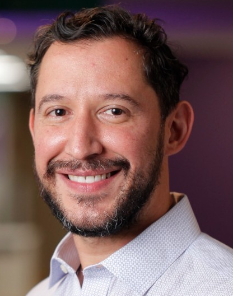With the rise in inflation in recent years, fintechs in Latin America have resorted to a new tactic to woo highly banked customers in the region. That is, paying high-yield interest rates on deposits in a region characterized by volatile currencies and meager returns on bank savings.
In May, Brazillian digital bank Nubank launched a savings accounts product in Mexico, a “fundamental part” of its expansion strategy, according to its country manager, Iván Canales. One month later, it reported a million customers had opened an account.
Although the rapid increase was largely caused by built-up demand, one marketing factor might have been fundamental in driving adoption. The neobank offers a 9% annual rate on savings, one of the highest in the market, as the fintech ramps up its acquisition strategy.
Challenger banks’ strategy
Challenger banks in Latin America are pushing high-yield virtual accounts to lure customers away from banks. In the context of high single-digit inflation, they expect clients will be more attentive to the value added to a more lucrative account.

“Almost half of Mexican adults do not use formal financial products, and those who do… they don’t get a return on their deposits,” Iván Canales, general manager at Nubank México, told Fintech Nexus. “There are many people in Mexico whose money remains idle. That is why we launched a savings account.”
With inflation back in Latin American countries, fintechs have adjusted their strategies to draw new clients. Nubank’s 9% rate is markedly higher than inflation of 5% as of the latest reading.
“In the context of currencies losing value, these alternatives become necessary to safeguard purchasing power,” Sebastián Camiser, a fintech advisor and professor at Universidad Austral, in Buenos Aires, told Fintech Nexus. While banks frequently offer investment alternatives, clients are often unfamiliar with those options, while fintechs succeed in simplifying the process.
Fintechs in Latin America vie for young customers
To be sure, many fintech CEOs in Latin America make a case for serving the underbanked. However, the digital banks’ customer base is often comprised of many digitized young individuals who already operate within the formal sector.
It is quite frequently the case that a bank customer would open up multiple virtual accounts. In Brazil, a recent study showed 30% of credit card users in the country were also clients of digital banks.
Digitally-banked customers are a coveted audience. “It’s a highly relevant segment for banks and fintech,” Camiser said. “The young segment within traditional banks handles a large volume of operations, even the most complex ones.”
Mercado Pago in Argentina, a major inflation hotspot
Perhaps no country illustrates better the impact of investing products than Argentina. With inflation above 100% per year, savers are exposed to a significant loss if they do nothing.
Mercado Pago was one of the first fintechs in the region to roll out high-yield savings accounts. Just by giving consent, it automatically invests customer savings into low-risk mutual funds. They pay roughly 80% yearly return. Although other alternatives pay a higher rate (closer to inflation), the fintech places stock on making the process extremely simple.
Mutual funds offered by traditional banks pay a higher return, yet funds cannot be redeemed over weekends. Nor outside of business hours. On the contrary, Mercado Pago allows withdrawals at any time.
“Products such as this address an important point of friction and are a good strategy to attract clients,” Camiser said. However, he cautioned that for the high-yield account to be relevant, it must offer a more competitive real interest rate. “Otherwise, it won’t work in the long run.”


